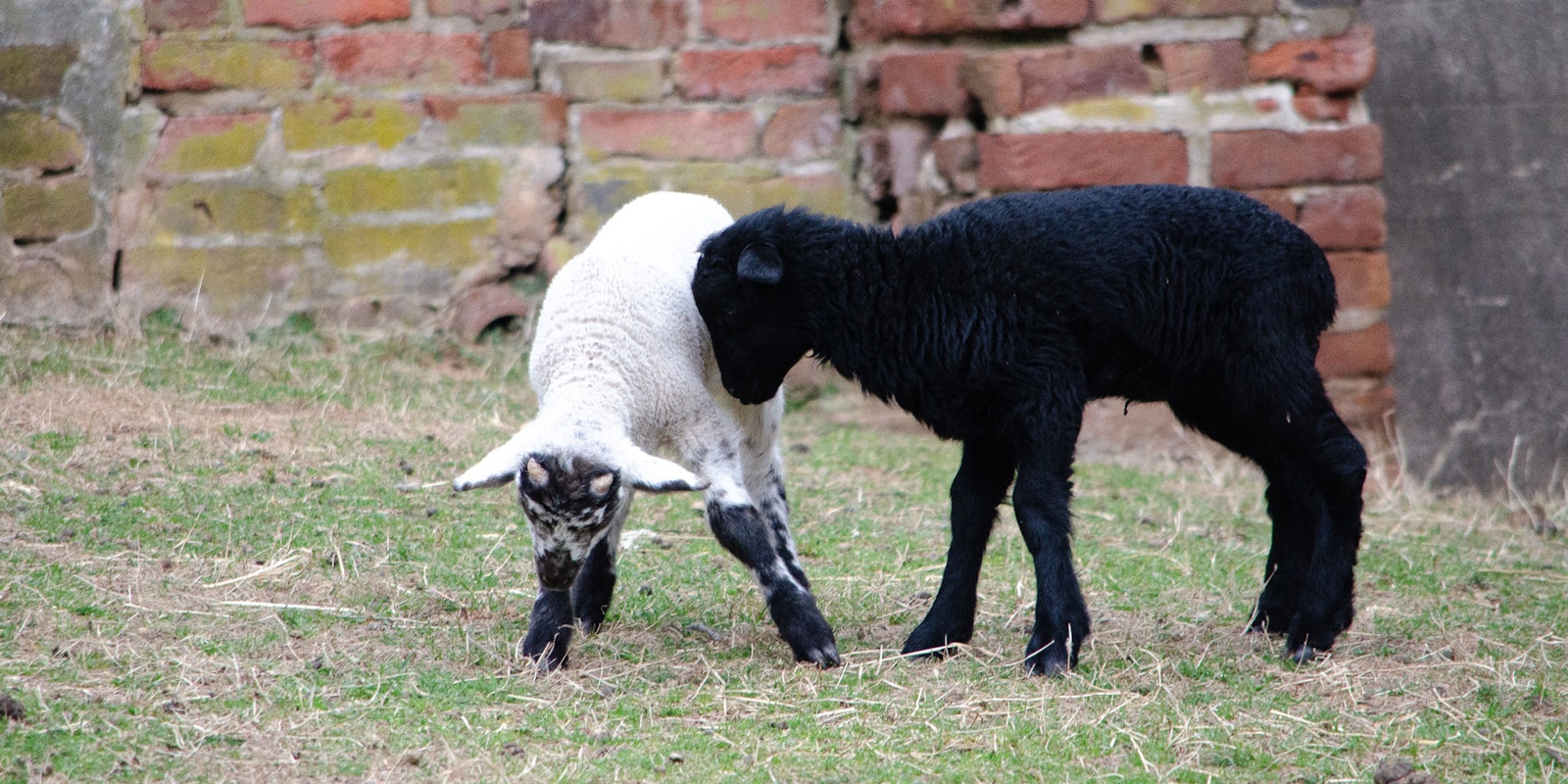In the large-scale wool industry, white wool dominates. If you need uniform color across thousands of pounds of fiber, or you need wool that always takes dye brightly, you may prize the brightest white wool you can find. Over generations of sheep, that’s one trait you would select for when breeding, and soon you would have fields of fluffy white sheep.
But if you love small batches of yarn and hand-dye smaller quantities, the natural colors of brown, gray, black, and all the hues in between may be just the special treat you’re looking for. You can have a range of shades for colorwork knitting without going near a dyepot, and a simple dyebath brings out a depth that would be hard to achieve in plain white wool.
 The North Road Hat by Kate Larson uses natural colors of Shetland wool from Jamieson & Smith in a complex Fair Isle knitting design. Photo by George Boe
The North Road Hat by Kate Larson uses natural colors of Shetland wool from Jamieson & Smith in a complex Fair Isle knitting design. Photo by George Boe
Many of the best-known sheep breeds, such as Merino, Targhee, and Corriedale, are generally white in color, though a few shepherds are working to bring out color genetics in their flocks. But there are also breeds known for producing not just one color but a variety of colors: Shetland, Navajo Churro, Jacob, and California Variegated Mutant (CVM), just to name a few. Natural colored Shetland yarns are made available to knitters in many parts of the world by companies such as Jamieson & Smith and Jamieson’s. While produced on a commercial scale, these special fleeces are still hand-sorted by color after shearing each year.
Jennifer Johnson and her husband, Rich, raise finewool Shetland sheep at Whispering Pines Farm in upstate New York. Speaking about her flock’s color range, Jennifer says:
As a shepherd, one of the many traits that I appreciate about Shetland sheep is their famous range of fleece colors. With the possibility of 11 main natural colors and more than 30 recognized marking patterns, the combinations can make for a pretty picture when a flock is grazing on pasture. These color variations can also result in some very interesting yarns without the aid of a dyepot.
The names of Shetland sheep colors and markings—such as emsket, flecket, and yuglet—are drawn from Norn, an ancient language of the North Atlantic. Many Shetland sheep breeders around the world continue to use these names when describing the Shetland patterns of the sheep.
Read more about Jennifer and her flock.
Knitters of small-batch yarns have a great chance to celebrate black sheep—and the brown, red, and gray ones, too.
-Anne
Anne Merrow is Editorial Director and a co-founder of Long Thread Media.

